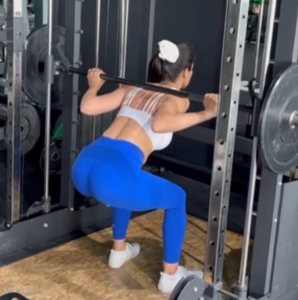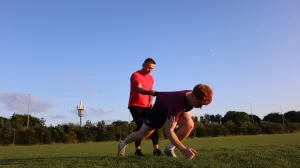When it comes to running faster, longer, and with less risk of injury, proper running form is everything. Whether you’re training for a 5K, 10K, or half marathon, improving your running technique can lead to big gains in speed and energy efficiency.
In fact, many runners plateau not because of fitness, but because of inefficient form. The good news? You can improve it with focused practice.
🏃♂️ Why Running Form Matters
Running is a repetitive, high-impact movement. Poor form increases energy waste and puts extra strain on your joints and muscles, which can lead to:
Fatigue during longer runs
Slower race times
Shin splints, knee pain, and hip tightness
Reduced running economy
Improving your form means running smoother, faster, and with less effort—so you can reach your full potential.
✅ Key Elements of Proper Running Form
1. Posture
Keep your chest tall and shoulders relaxed. Avoid slouching or leaning back. A slight forward lean from the ankles, not the waist, keeps your momentum moving forward.
2. Arm Swing
Your arms should swing forward and back (not side to side) with elbows bent at about 90°. Hands should stay relaxed, no clenched fists.
3. Foot Strike
Aim for a midfoot strike beneath your body, not out in front. Overstriding (landing heel-first far ahead of your centre of mass) can slow you down and cause injury.
4. Cadence
A quicker turnover (ideal range: 170–180 steps per minute) reduces ground contact time and helps you run more efficiently.
5. Breathing
Controlled breathing (in through the nose and out through the mouth, or steady rhythmic breathing) helps deliver more oxygen and keep your heart rate stable.
🧠 Tips to Improve Running Form
Record yourself running or get a gait analysis with a coach
Drill it out: Try high knees, A-skips, and butt kicks as part of your warm-up
Strengthen your core and glutes: Strong stabilisers improve posture and stride
Run tall and relaxed: Tension in your upper body wastes energy
Practice good form during slow runs, not just speed workouts
🎯 Long-Term Benefits of Better Running Technique
Faster race times
Reduced injury risk
Improved recovery
Greater confidence in every stride
Better performance at every distance
🚀 Want to Run Faster & Smarter? Start With Your Form.
At JC Fitness, we don’t just build training plans, we build better runners. Jason Cafferkey is Ireland’s leading speed development coach, helping beginners and competitive athletes fine-tune their technique for greater efficiency and speed.
Through in-person (County Galway, Ireland) and online coaching, Jason works with runners to correct poor mechanics, improve form, and build smarter habits that lead to long-term progress.
Want to know how your form could be holding you back? Book a FREE phone consultation with Jason today. Get expert feedback, actionable advice, and learn how coaching can elevate your running performance.
Keywords: running form, how to run efficiently, improve running technique, better running posture, running tips Ireland, speed development, injury-free running, running coaching Ireland, running economy, beginner running advice
Hashtags:
#RunningForm #ImproveYourStride #RunFaster #RunningTips #RunStrong #InjuryFreeRunning #RunningTechnique #SpeedDevelopment #TrainWithJason #JCfitness #RunningCoachIreland #RunEfficiently #GaitTraining #RunningPosture















